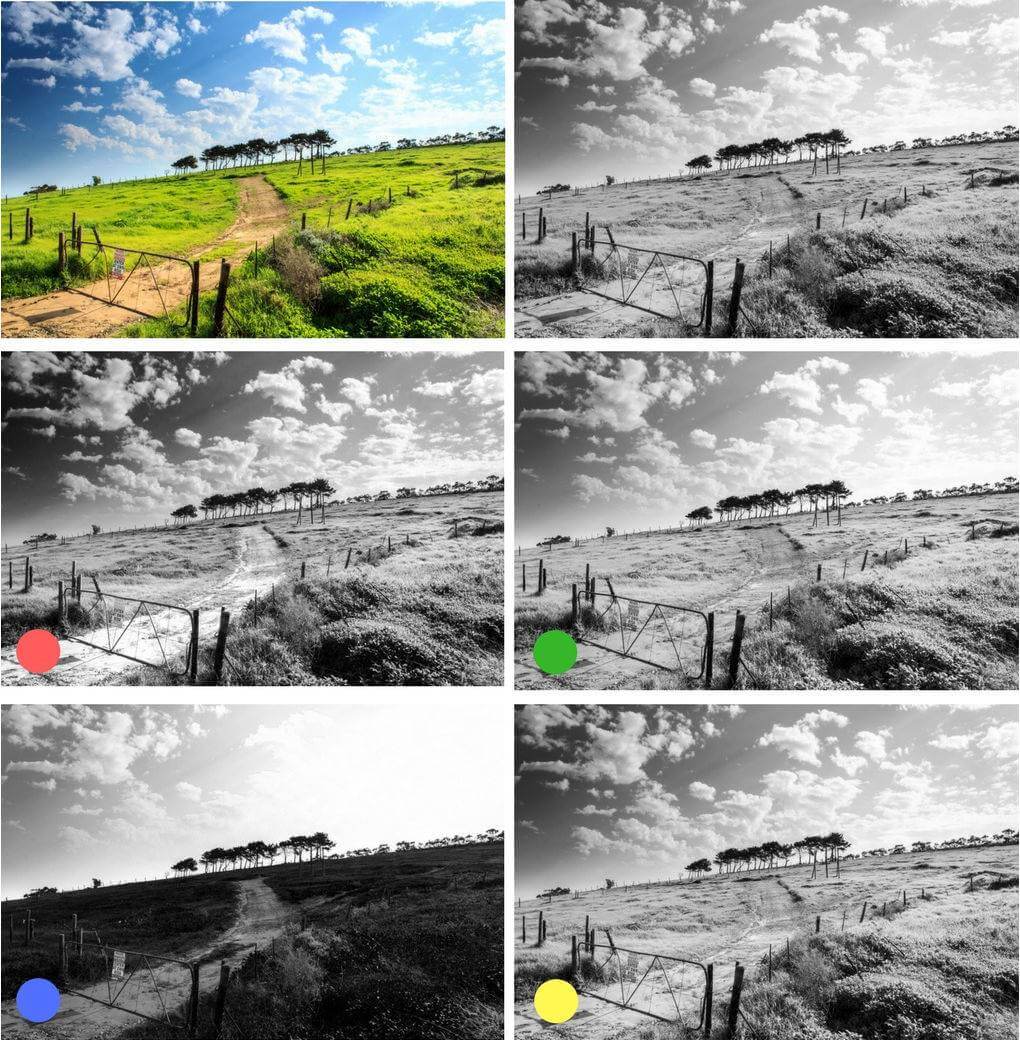
Using colour filters with black and white film photography
35mm film cameras or analogue photography arguably creates the best black and white photographs. To get the best out of your analogue camera, many photographers use colour filters. These colour filters help to bring out certain contrasts or details in black-and-white photos. Colour filters are made from coloured glass, plastic or foil that are placed directly in front of the lens and filter out a certain colour.
Read the following guide to find out more about what effect colour filters have on the quality of your black and white photos and depending on the subject in the photo, which colour filters you should use.
Effect of different colour filters
If you want to improve the quality and contrast of your analogue black and white photos, you cannot avoid using colour filters. The choice of the right filter depends on the subject and the mood you want to portray. Areas of the final image will appear in a lighter or darker shade of grey, depending on the colour of the filter used. The filter allows the colours that match the colour filter to come through and it restricts the others, for example if you use a red filter the reds on your subject will appear as a lighter shade of grey in the final image.

Red filter for black and white photography
If you use a red filter blue tones will appear darker in black and white images. A red filter is great for creating dramatic black and white shots of clouds. Red filters will make skin tones lighter, so when shooting portrait shots, be aware that the model’s skin will appear lighter. However, because the red filter generally renders yellow, red and brown tones lighter it can also be used to conceal freckles, scars and other blemishes.
Blue filter
A blue filter is great for portraits with fair-skinned models. This is because the light skin is rendered darker, however, skin blemishes tend to show up more. A blue filter is great for capturing haze or fog, as they appear more dramatic whereas a plain blue sky will become overexposed and almost white in black and white images.
Yellow filter
The yellow filter is one of the most popular choices for shooting landscapes. It is well suited for highlighting the clouds and sky. This is because they appear darker in black and white images. A yellow filter is less suitable for portraits because the skin and lips appear brighter than they are and it tends to look unnatural.
Green filter
A green filter is very good for emphasising the differences between green tones in a black and white image. It is mostly used in landscape photography when taking pictures of trees and forests. The green filter splits the different nuances of green tones. These appear as fine gradations in a black and white image.

Conclusion: Colour filters in black and white photography
To improve the quality of black and white photographs, the use of colour filters is recommended. Fixing contrast and small colour errors can be quickly corrected with the help of digital image editing, however, in analogue photography they can only be corrected with the help of the appropriate colour filters. Not every filter is suitable for every subject. A blue filter, for example, is rarely used for landscape photography because it renders green tones too dark and blue tones too bright. The choice of the right colour filter, therefore, depends on the subject and the original colours. In general, it is important to ensure that the inherent colour of the colour filter is always reproduced more brightly on black-and-white images.
